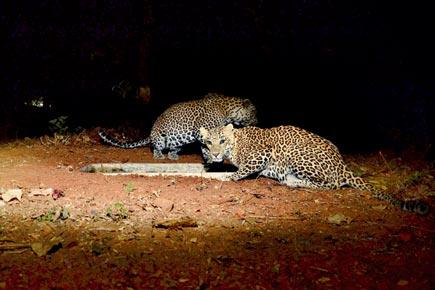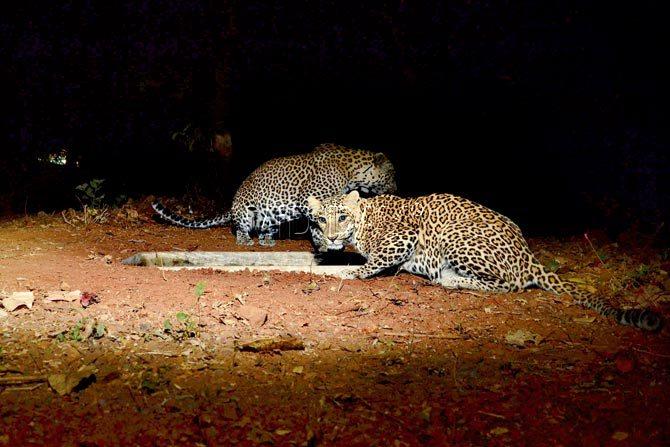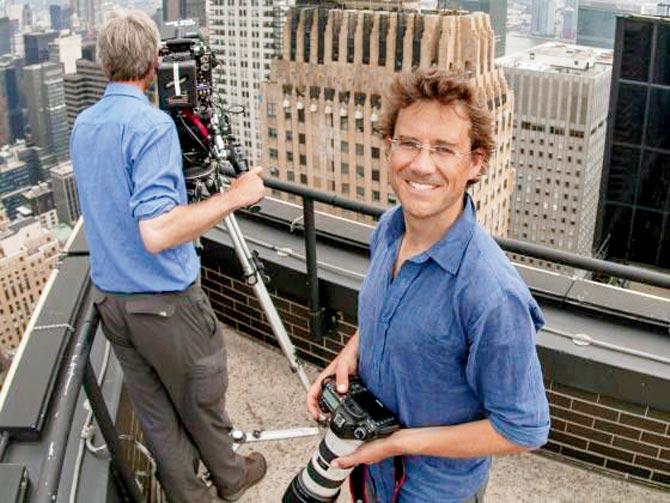Filmed for BBC One's wildly popular Planet Earth II to exemplify peaceful coexistence between man and animal

 Leopards skulk in Aarey Colony. SGNP has 35 leopards, seven of which are in Aarey. Pic/Ranjeet Jadhav
Leopards skulk in Aarey Colony. SGNP has 35 leopards, seven of which are in Aarey. Pic/Ranjeet Jadhav
ADVERTISEMENT
A seldom visited part of Mumbai’s landscape and its elusive tenant have made it to the most watched natural history show in the UK in 15 years. Urban leopards along the eastern periphery of Sanjay Gandhi National Park (SGNP) -- covering Thane and Mulund -- were filmed for the upcoming ‘Cities’ episode of Planet Earth II.
Fifteen people -- five foreign naturalists and 10 locals and tribals, aged 20-45 -- spent January through February this year skulking around the park with ultra high definition cameras, military-grade thermal imaging cameras and night vision infrared cameras, capturing every move of the urban leopard.
Remarkable coexistence
Fredi Devas, producer of the Cities episode, told mid-day from the UK that Mumbai serves as an incredible example of how the wildlife and humans co-exist in urban settings. “The way leopards and humans share space there is remarkable. That’s why Mumbai and urban leopards were chosen to be a part of our Cities episode.”
 Fredi Devas, producer of Cities episode
Fredi Devas, producer of Cities episode
But why SGNP? “We were making a film about urban wildlife. What’s incredible is that in Mumbai, leopards can be seen roaming the streets. What is surprising is the fact that Mumbai, rather SGNP, has the highest density of leopards in the world, beating even Yala [National Park] (in Sri Lanka, which, too, has one of the highest leopard densities),” said Devas.
The team of filmmakers, he said, wanted to shoot a sequence that showed the inspiring coexistence with the wildlife and people’s “tolerance” of the shy leopards, a misunderstood and feared lot.
At home
Devas explains that SGNP offers the perfect ecosystem: Leopards have a natural habitat to go back to during the day and can hunt prey, like dogs and pigs, inside the park at night. “Of all the countries I can think of, India is the best example of inhabitants truly welcoming the wildlife amongst their midst.”
Devas has even gushed about this “tolerance” on the BBC Earth website. “I can’t think of another country where a relocation program would not have been put into place by now. Indian people are totally remarkable in their tolerance of allowing animals into their city,” he said.

Wildlife conservationist Krishna Tiwari, who helped the BBC team film leopards, said the footage includes never-before-filmed behaviour of leopards. “It shows how well these cats have adapted and peacefully coexist with the humans. I hope this documentary will contribute to educating people on protecting leopards’ habitats.”
The episode will air in the UK on December 11. It will also feature langurs from Jodhpur and macaques from Jaipur.
Wildlife documentary filmmaker Sandesh Kadur and filmmaking firm Felis Creations’ production head Adarsh NC helped the crew with the shoots.
 Subscribe today by clicking the link and stay updated with the latest news!" Click here!
Subscribe today by clicking the link and stay updated with the latest news!" Click here!







